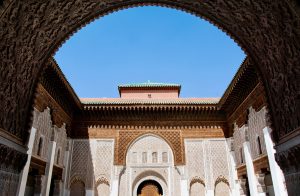Saint Gregory of Siani 14th C. Monk, not to be confused with the Pope of the same name. This Gregory was a Greek. He was also a prolific writer and several of his works survive, so there is some modern-day information about Saint Gregory of Siani. Among other things, he was instrumental in the emergence of hesychasm on Mount Athos in the early 14th century. Hesychasm is a contemplative monastic tradition in the Eastern Christian traditions of the Eastern Orthodox Church and Eastern Catholic Churches in which stillness (hēsychia) is sought through uninterrupted Jesus prayer. He was rooted in early Christian monasticism. Have you ever heard of him?
Saint Gregory of Siani Biography

Saint Gregory of Siani was born in Smyrna, Greece. He was captured by Seljuk Turks at a young age and was eventually ransomed to Cyprus. He became a monk at Saint Catherine’s Monastery in the Sinai Peninsula, which is where Saint Gregory of Sinai got his name. After that, Saint Gregory of Siani moved to Crete, where he learned the practices of hesychasm from a monk named Arsenios. He later spread the movement.
In 1310, he went to Mount Athos, where he remained until 1335. At Mount Athos, he was a monk at the Skete of Magoula near Philotheou Monastery. Increasing Muslim raids on Athos pushed Gregory and some disciples into the Bulgarian Empire, where he would find protection under Bulgarian Emperor Ivan Alexander. He went on to found a monastery near Paroria, located in the Strandzha Mountains of southeast Bulgaria.
His disciples also included Nicodemus of Tismana, and Patriarch Kallistos I of Constantinople. He is also a saint and he wrote a biography called The Life of Gregory, about the life and times of Saint Gregory of Siani. Romylos of Vidin, Theodosius of Tarnovo, Gregory of Sinai the Younger, and Gerasimos of Euripos.
His best-known work is the 137 Chapters, or Spiritual Meditations, containing his doctrine that extended the Hesychast movement throughout Europe and the Byzantine world. His Hesychasm expressed the fundamental purpose and longing of Greek spirituality, namely to bridge the gulf between human and divine existence. Hesychast prayer aspires to attain the highest form of God–human communion in the form of a vision of the “divine light” or “uncreated energy” analogous to the Gospel account of Christ’s Transfiguration on Mt. Tabor told in both the Gospels of Matthew and Mark..
Hesychast literature recounts a similar transforming experience in a period of intense concentration, controlled breathing, and repetitive prayer utterances of the “Jesus prayer.”) The theological apology for this experience was given by Gregory’s contemporary, St. Gregory Palamas of Mount Athos, in the religious–political turmoil raging during the mid-14th century. Other disciples spread Hesychast doctrine throughout Eastern Europe and Russia.
Other works by St. Gregory are written in Greek and, therefore, inaccessible to most people. The Philokalia includes five works in Greek by Gregory. On Commandments and Doctrines, Warnings and Promises; on Thoughts, Passions, and Virtues, and also on Stillness and Prayer: 137 Texts. On the Signs of Grace and Delusion, Written for the Confessor Longinos: Ten Texts. On Stillness: Fifteen Texts. On Prayer: Seven Texts. He also wrote works on Christian asceticism, verses on the divine Trinity (nature of God), liturgical hymns, and arguments against the Roman theory that the Holy Spirit relates to the eternal Son as well as to the Father.
Saint Gregory of Siani died on November 27, 1346, in the mountains of Paroria, near present-day Zabernovo, Bulgaria. However, many of his writings still survive, so we know a lot about him even though he died nearly 700 years ago. He was made a saint close to when he died and is also important to the Eastern Orthodox church.
Conclusion
This is another obscure saint, who is often confused with the Pope of the same name. It is a good thing that several of the things he wrote still exist, it is also good that a biography of him was written because we know a great deal about him. It is worth knowing about Saint Gregory of Siani because he practically founded a movement, and his devotion is worthy of emulation.